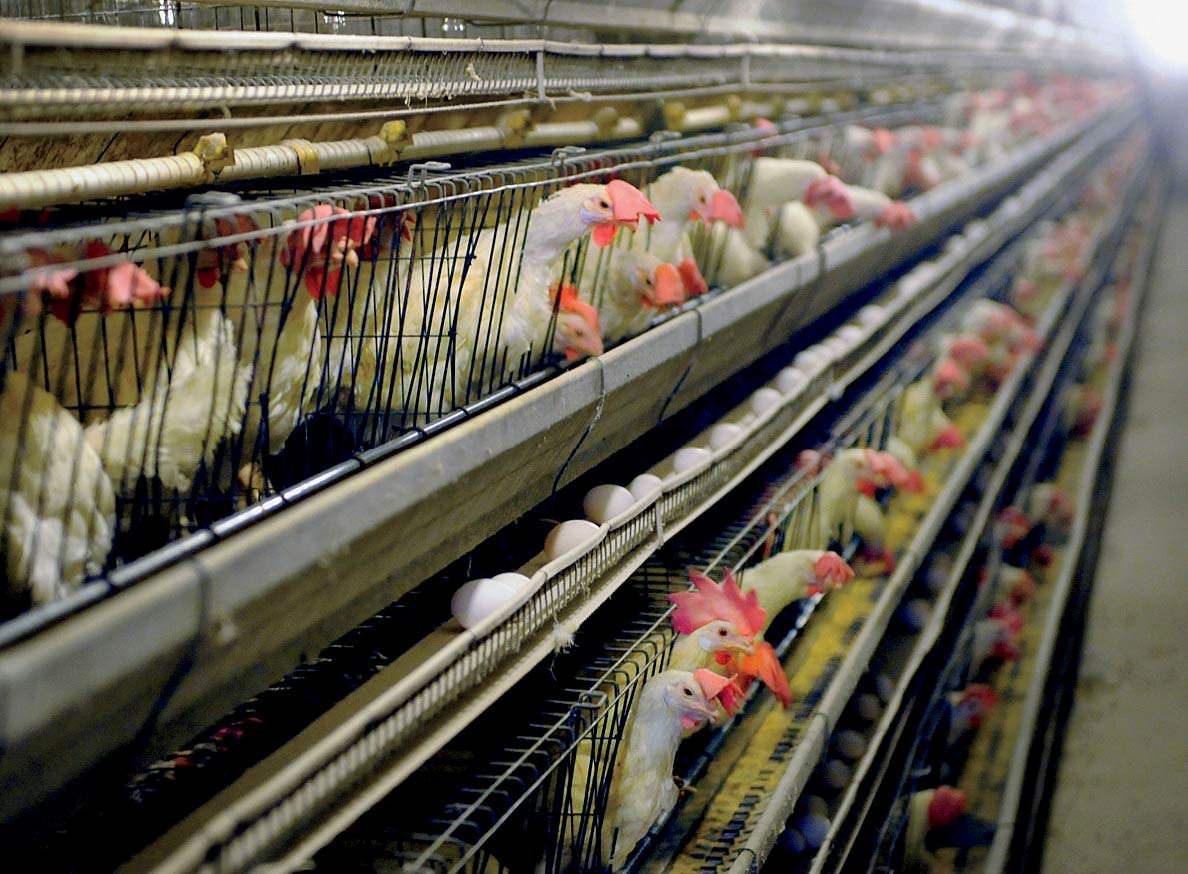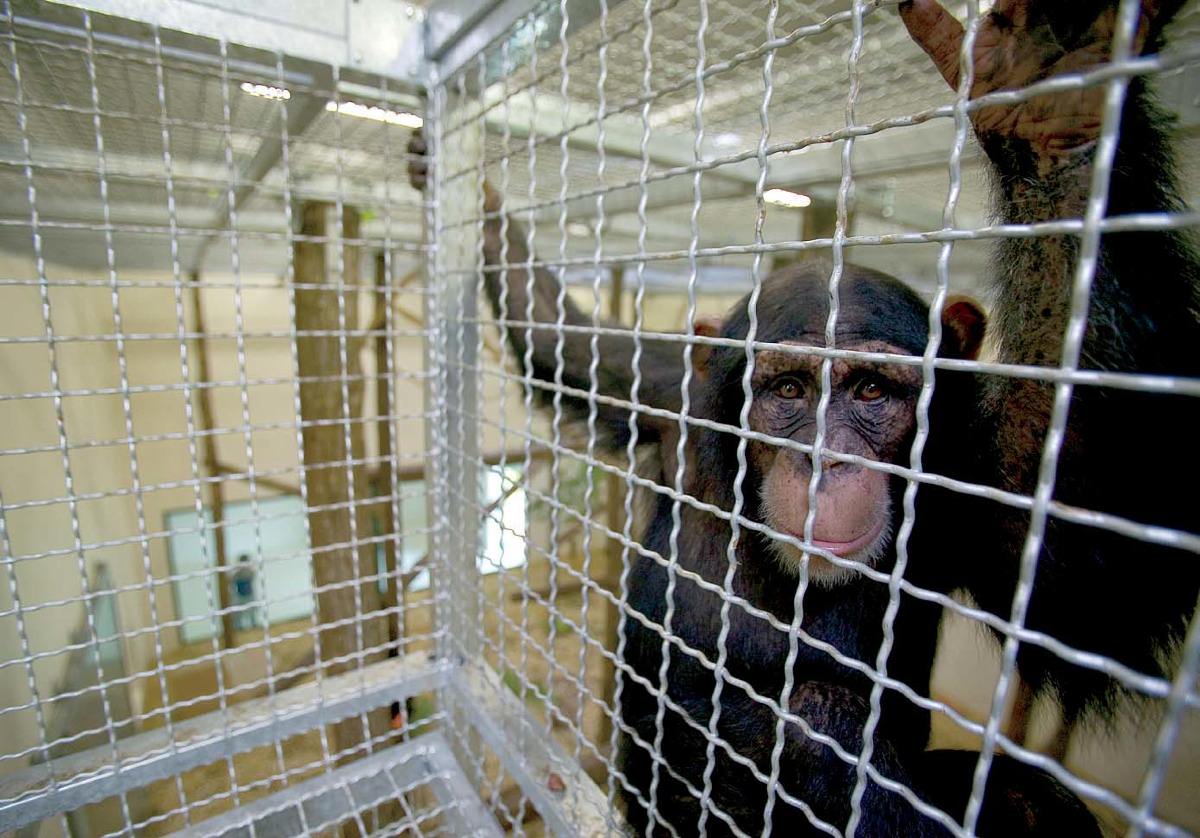Jeremy and Kathryn Medlen have two children, but with eight-year-old Avery around, it often felt like three. A beloved mixed-breed mutt with flopped-forward Labrador ears, Avery was a member of the family, welcome on the couch, included on vacations, a fixture in family photos. But in June 2009, the dog spooked at a thunderclap and fled the Medlens’ Fort Worth, Texas, backyard. He ended up at a nearby shelter, where his overjoyed owners found him the following day. They lacked the cash to pay the required fees, however, so a “hold for owner” tag was placed on Avery’s cage until their return. But when Jeremy Medlen arrived with the cash and his two children in tow, their pet had disappeared. Somehow, there’d been a mix-up, the Medlens were told. Avery had been put to sleep.
Devastated by the loss, the Medlens brought a lawsuit seeking damages for Avery’s sentimental value from the shelter worker who’d made the tragic mistake. But in the Lone Star State, they learned, “loss-of-companionship damages” were available only for human plaintiffs who’d lost close human family members. In the eyes of American law, animals are considered property, and in Texas, this entitled the Medlens only to their “property’s” market value. As an eight-year-old mutt, Avery had virtually no value at all, and the case was dismissed.
So the Medlens appealed the decision. In the past, Texas courts had awarded damages for the sentimental value of personal property with little or no market value—such as lost heirlooms like jewelry, pistols, and hand-made bedspreads—and the Medlens argued that Avery fit this category perfectly. The Texas Court of Appeals agreed, but the state’s Supreme Court overturned that decision, ending the Medlens’ quest for compensation.
Animals were property, the Supreme Court ruled, but they were not like other types of property. Although an heirloom is “sentimental,…an owner’s attachment to a beloved pet is more: It is emotional…based…on the rich companionship it provides,” the court found, and “cannot be shoehorned into keepsake-like sentimentality for litigation purposes.”
The Medlens were stunned. If this were true, they argued, one could seek sentimental damages for the destruction of a “taxidermied” pet deemed an heirloom, but not for a euthanized animal. Furthermore, it trapped them in a Catch-22. “Loss of companionship” damages were not available because Avery wasn’t human, yet the court also said that pets offered such “rich companionship,” they could not be treated as things. It left the Medlens wondering: Did property law apply to animals, or didn’t it? Was a lost heirloom, an inanimate thing, really more emotionally valuable than their beloved pet? And why, if judges believed an animal to be a special kind of property—“not a fungible, inanimate object like, say, a toaster,” as the court wrote—was the law still so unclear?
These questions are at the center of a Harvard Law School (HLS) course on animal law. First offered in the spring of 2000, it was initially among a handful of its kind; today, more than 150 American law schools offer classes on the topic, a reflection of the growing interest in a young field whose scope and influence are still being defined.
These issues have also become increasingly compelling to practicing lawyers. In the United States, laws regulating the treatment of animals have been on the books since the early Colonial period, but “animal law” as a field is relatively new, and focuses increasingly on the interests of the animals themselves, rather than on their value to the humans who write and litigate the laws governing them.
As the role of animals in society and the economy has evolved, and more recently, as scientific research has revealed more about animals’ cognitive abilities and social development, public sensibility has changed dramatically, often leaving outmoded law behind. As a result, lawyers worldwide have begun searching for innovative ways to make animals more visible to the law: strengthening and enacting new anti-cruelty statutes, improving basic protections, and, in some more radical cases, challenging animals’ property status itself in an effort to grant them fundamental rights.
But even as legal advocates press toward the same goal—closing the gap between the way many people believe animals should be treated, and how the law actually treats them—their strategies can differ vastly. Sometimes, they clash outright.
“Animal welfare and animal rights are two different goals within the field of animal law,” explains law professor Kristen Stilt, who teaches the animal-law survey class—an annual course typically oversubscribed on the first day of registration. The law divides everything in the universe into just two categories, she explains: “persons” and “property.” Legal persons have rights, property doesn’t—so all “animal laws” on the books are about protection and welfare, not about intrinsic individual rights.
Most lawyers interested in animal issues focus on animal welfare, she says, using the existing legal system to challenge, improve, augment, and enforce laws protecting animals. But the issue of whether animals should have legal rights—and which rights, and which animals should have them—is wide-open. If persons have rights and property doesn’t, some scholars and practitioners argue, then legal “things” like animals remain mere chattel in the eyes of the law, subject to whatever use legal persons deem important. But if animals are no longer deemed property, many ask, where should law draw the line? Should primates have the same rights as humans? Should dogs? Should ants? What about animals in the wild, or those used in medical research, or the billions slaughtered for food?
At the moment, says Stilt, the law remains unwavering: animals are property—albeit with certain protections. But the people administering that law have become increasingly uncomfortable with that designation. The Medlens’ case is a good example that she teaches in both her property and her animal-law courses. “Even the Supreme Court judge who wrote the opinion, before he ruled against [the Medlens], spent pages talking about how ‘Texans love their dogs,’” she points out; he drew a clear distinction between animals and anvils.
According to Stilt, this is where things stand in 2016 in animal law—a discipline that, 40 years ago, formally didn’t exist. “It’s part of what makes this field fascinating,” she says. “We know how law doesn’t work for animals, but we have no clear idea yet about how it should.”At the moment…the law remains unwavering: animals are property—albeit with certain protections.
Harvard’s original animal-law class, taught over the years mainly by adjunct professors who are scholars and practitioners in the field, was a product of student demand. In 1995, law students founded a local chapter of the Student Animal Legal Defense Fund (SALDF), affiliated with the national Animal Legal Defense Fund, a nearly four-decade-old organization dedicated to protecting animals from abuse through legislation and litigation. (SALDF members don’t litigate; their mission is to educate the community about issues facing animals, and various avenues of reform.) Hosting and promoting more than 20 events per year, SALDF quickly became a strong voice on campus, and by 2000, HLS had acknowledged their appeals. A gift from Pearson Television in honor of game-show host and avid animal protectionist Bob Barker funded the original course. In the years since, both regional and national bar associations have established their own animal-law committees to support and shape the burgeoning field. That has, in turn, inspired Harvard to broaden its investment in the discipline.
This year, HLS added “Wildlife Law” to its curriculum. Taught by Jonathan Lovvorn, senior vice president and chief counsel at the Humane Society of the United States and an adjunct professor of law at Georgetown University, the class is one of several new courses Harvard plans to offer. A gift from Bradley L. Goldberg, founder and president of the Animal Welfare Trust, has underwritten a new Animal Law & Policy Program intended to expand the animal-law curriculum, establish an academic fellowship program, and foster future academic gatherings and scholarship.
“This is one thing most law schools have not done to date—to approach animal law in an integrated academic program as opposed to a one-off course,” says Goldberg, who hopes his gift will help establish animal law as a recognized academic discipline. “My interest comes from believing that animal protection is a global social-justice movement…but unlike other social-justice movements such as women’s rights or civil rights, animal rights goes almost totally unrepresented in academia.”
Dean Martha Minow thinks the climate for animal-law growth is ideal. “Though treatment of animals has always been an issue, only recently has law begun to take it seriously,” she says. “For anyone thinking about the purpose of law, the legal treatment of animals forces a confrontation with what law is actually about—‘What are its purposes? What are its limits? Is law only about human beings?’” One way to understand legal history, she explains, is to trace “the ever-expanding circle of law—who’s in and who isn’t.” Animal law is part of the newest expansion of that circle, and “there’s an opportunity now to contribute to the development of law reform in a way that hasn’t always been the case.”
That opportunity and responsibility fall largely to Stilt, the faculty director of the new program, and Chris Green, its executive director, who must decide how to design a curriculum that covers a topic intersecting with all other areas of legal study. Cases involving animals range from civil suits (like the Medlens’ pet-compensation case) to criminal trials (like football player Michael Vick’s, for animal cruelty and dog fighting) to environmental lawsuits (protecting wildlife and its habitat), says Stilt—and “those are just the obvious ones.” She ticks off a long list of other questions that have come before the courts, among them: Does the right to free speech apply to undercover videotaping of cruel animal practices? Should humans be able to patent an animal? Who gets the pet in a divorce? Should religious freedom outweigh animal-welfare concerns?
Stilt touches on many of these topics in her survey class, but says a single course can never do the field justice. Among the topics she and Green are considering for attention is comparative international animal law, a topic with which Stilt is quite familiar. Her own background is in Islamic law (she also directs Harvard Law School’s Islamic Legal Studies Program, including its new Animals, Law, and Religion Project). Her interest and expertise in animal law began as a Middle Eastern history doctoral student living in Cairo, where she worked with a group of Egyptians who were starting the first modern animal-protection organization in the country. Animal issues became a focus of her scholarship, and she is currently working on a study of the recent inclusion of an animal welfare provision in the Egyptian constitution.
Chris Green’s career in animal law, in contrast, began at HLS. After a year there in the early 1990s, he took a six-year leave of absence and planned to enroll in veterinary school; he credits Harvard’s decision to offer that first animal-law class—and its engaging teacher, animal-protection lawyer and scholar Steven Wise—for helping him chart his professional life. Green eventually became an officer in the school’s SALDF chapter and immersed himself in animal advocacy; he went on to publish on the subject and become a legal advocate for animals, serving as chair of the American Bar Association’s animal law committee and, most recently, as the director of legislative affairs for the Animal Legal Defense Fund (ALDF). He also became a committed vegetarian—as are most animal lawyers; attorneys, quipped one practitioner, don’t eat their clients.
Wise began that first class, recalls Green, with a seemingly simple question: “Why should a human have fundamental rights?” Wise, in a recent telephone interview, said he has raised that issue in every class he has taught since, and students have responded with several explanations: sentience, cognition, language, and spirituality. But according to Wise, “The only way to answer that question is: ‘Because a person has the form of a human being.’” Consider the case of a baby born with only a brain stem—no consciousness, no sentience, only the ability to breathe and digest. Students would recoil, he said, when he’d ask why they couldn’t experiment on that baby…or kill, or even eat, her.
Courts or legislatures may ultimately decide that it is “human form” that determines personhood, Wise told a New York Times Magazine reporter in 2014. But if they do make that decision, he continued, “I’m saying that’s irrational. Why is a human individual with no cognitive abilities whatsoever a legal person with rights, while cognitively complex beings such as [a chimp] or a dolphin or an orca are things with no rights at all?”
Some legal scholars answer the animal rights question very differently. Richard Epstein, a law professor at New York University, is an outspoken critic of Wise and of the notion of extending rights to animals. “You cannot prove that an animal has the capacities of a human being by proving that it’s not a stone,” he said in an interview. The issues that would come with rights, he argued, would cascade and snowball down a slippery slope. If a wild animal occupies land, can it own it? Can animals enter into contracts? Can they vote by proxy?
Even if the law awards animals just one right—the right to bodily liberty, as Wise advocates—the question, Epstein argued, becomes, “Which animals?” “We kill millions of animals a day for food,” he pointed out. “If they have the right to bodily liberty, it’s basically a holocaust.”
Epstein pointed to the work of many animal-welfare lawyers—as well as to the work of Temple Grandin, an autistic professor of animal studies who designs farm-animal slaughter systems that take animal needs and fears into consideration—as shining examples of what animals need. “You can give animals protection without giving them rights,” he said. “The two are separate things.”
During the past few decades, animal protections have expanded exponentially. Various states now have laws banning unethical hunting practices. In 2013, California became the first state to ban the use of lead bullets for hunting (which not only kill their target, but poison the scavenger birds and animals who clean their carcasses). Many states outlaw steel-jawed leg-hold traps and cock- and dog-fighting (some, including Colorado and Massachusetts, ban bear-baiting). Florida, by ballot initiative, was the first state to forbid gestation crates (6-by-2-foot-wide metal crates in which breeding sows spend their entire lives, unable either to stand or turn around); eight states followed suit with similar protections. A 2016 Massachusetts ballot initiative proposes ensuring that breeding pigs, veal calves, and egg-laying hens can stand up, lie down, turn around, and extend their limbs by phasing out inhumanely small and crowded cages. Perhaps most notably, as of 2014, when South Dakota added a felony provision to its animal anti-cruelty laws, all 50 states can now prosecute violations of animal anti-cruelty laws as felony offenses.

Many egg-laying chickens spend their lives in cages.
Photograph by Gerald Martineau/The Washington Post/ Getty Images
Nevertheless, the scope of the protection afforded an animal often depends on where it lives and what “business” it’s involved with. Many state anti-cruelty laws categorically exempt farmed animals or standard husbandry practices, such as de-horning, de-beaking, tail-docking, and castration without pain relief. There is no federal law protecting chickens from cruelty or abuse on a farm, for instance, and state anti-cruelty laws often exempt them from protection, says Jonathan Lovvorn—but if someone kills or injures a blue jay in the rafters of a chicken house filled with 10,000 laying hens crammed five or more to a crate, he “could be fined $15,000 and sentenced to six months in jail under the Federal Migratory Bird Treaty Act.”There is no federal law protecting chickens from abuse on a farm…but if someone kills or injures a blue jay in the rafters of a chicken house, he could be fined $15,000 and face months in jail.
Steven Wise agrees that animal-welfare work is both valuable and necessary; he practiced it himself for years. To date, he points out, the Nonhuman Rights Project (NhRP), an organization he founded and now runs that protects the civil rights of animals, is the only group of lawyers practicing animal rights law, or animal jurisprudence, as he now calls it. “I practiced animal law,” he says, “because that was the only law that existed.” Although he now fights to address the larger question of legal personhood, he acknowledges that there are thousands of suffering animals that need legal protection today.
His sights, though, are set squarely on removing animals from the category of “things,” a goal he believes requires the construction of a new kind of law dealing with the rights of nonhuman animals. In 2013, he filed his first of three cases on behalf of chimpanzees, producing headlines such as “Should a Chimp Be Able to Sue Its Owner?” and “Are Chimps Entitled to Human Rights?” (Chimpanzees, says Wise, are just the first of many animals he hopes to help free. He settled on them because of the abundant research on their cognitive capacities; not only are they the closest nonhuman relatives, sharing 99 percent of humans’ DNA, they also share the ability to think, feel, anticipate the future, and remember the past. More practically, he adds, if his team does achieve success, freed captive chimps can go to established sanctuaries; other large animals with high levels of cognition, like orcas, have no such option.)
Wise’s strategy has been to file writs of habeas corpus (requests that a judge evaluate whether someone is wrongfully imprisoned) on behalf of chimpanzees. In the past, such writs have been issued only for persons, and no U.S. judge has yet broken that legal precedent. But personhood has been awarded to nonhumans in the past, Wise points out: corporations and ships have been classified as persons under the law. They don’t enjoy all the rights that individual humans do, but in the case of corporations, for instance, the Supreme Court has ruled that businesses have the right to spend money in elections, and may in some cases, on religious grounds, refuse to cover birth control in employee-health plans.
Although he has not yet won a habeas claim on behalf of a chimp, Wise has gained significant ground with courts. When he began his work, no court had ever allowed a non-injured human to sue on behalf of an injured animal. But this past year, one judge did grant Wise “an order to show cause” (basically habeas without a prisoner being called into court, he explains)—allowing him to argue on behalf of his chimpanzee client in front of a judge and the chimpanzee’s owner. The judge did not rule the chimp a “legal person,” but the mere granting of the hearing—an action historically reserved for humans—was, says Wise, a milestone in his multiyear effort. “I don’t believe that animals’ property status is the root of the problem,” he explains. “I believe that being ‘a thing’ is.”
His work for two chimpanzee clients, Hercules and Leo (used for research at Stony Brook University), may already be paying off. In 2013, he and NhRP filed a case against the university on the chimps’ behalf. NhRP persisted through an appeal, and refiled the case in March 2015. A month later, Stony Brook indicated that it would no longer experiment on the chimps. Now, after months of negotiation with the chimps’ owner, the New Iberia Research Center, NhRP has begun a public-pressure campaign to release the animals to the custody of a sanctuary.
In the past, when teaching her animal-law survey class, Kristen Stilt has devoted an entire segment to nonhuman primates and Wise’s work. What he may not yet have achieved in the courts, she says, he has unquestionably achieved in the court of public opinion. Coverage of his work has brought the issue of animals in captivity—particularly chimpanzees—into general public conversation, raising questions among activists, scholars, and “people who simply had never given these issues thought.”
This past May, Loeb University Professor and constitutional-law scholar Laurence Tribe submitted an amicusletter supporting NhRP’s request for an appeal in one of its first chimpanzee cases. His procedural argument: that “the lower court fundamentally misunderstood the purpose of the common law writ of habeas corpus,” which is simply to consider arguments challenging restraint or confinement (“the question of whether and when a court has authority to entertain a detainee’s petition at all”), not to decide whether or not to award relief (“the question of what substantive rights, if any, the detainee may invoke, and what remedy…the detainee may properly seek”).
Perhaps more significantly, Tribe also claimed that the court “reached its conclusion on the basis of a fundamentally flawed definition of personhood.” The court reasoned that habeas corpus applies only to legal persons and assumed that chimpanzees could not qualify. But that line of reasoning, he wrote, relied on “a classic but deeply problematic—and at the very least, profoundly contested—definition of ‘legal personhood’ as turning on an entity’s present capacity to bear ‘both rights and duties.” This definition, he argued, “would appear on its face to exclude third-trimester fetuses, and comatose adults…importantly [misunderstanding] the relationship among rights, duties, and personhood.”
Denver University constitutional law professor Justin Marceau, J.D. ’04, also filed an amicus brief on behalf of a group of fellow scholars, stating that “this may be one of the most important habeas corpus issues in decades and the lower court’s resolution of the matter is in fundamental tension with the core tenets of the historical writ of habeas corpus.”
Marceau recently attracted national attention for winning a landmark federal case in Idaho as the lawyer representing ALDF, an animal advocacy organization that, along with a diverse coalition of organizations, challenged a state statute criminalizing undercover investigations documenting animal welfare, worker safety, and food-safety violations at industrial-farm facilities. The court set a precedent, ruling that the statute violated both the First Amendment (regarding free speech) and the Fourteenth Amendment’s equal-protection clause by enacting a statute motivated by “unconstitutional animus” against animal advocates. The decision may be a harbinger for other states that have enacted such agricultural gag (“ag-gag”) laws. “Laws like the one in Idaho try to silence modern-day Upton Sinclairs—the whistleblowers of our time,” says Marceau, “and a court has now ruled that’s unconstitutional.”
In law school, Marceau originally planned to focus solely on civil rights and the death penalty. But after taking the animal-law survey course, then taught by David Wolfson (a visiting professor, now a partner at Milbank, Tweed, Hadley & McCloy who devotes his pro-bono hours to animal-welfare law), he, like Chris Green, found a new passion. “The class absolutely changed the trajectory of my life,” says Marceau. At the Sturm College of Law, he now holds the first animal-law chair in the country.
Support from scholars like Tribe and law professors and practicing lawyers like Marceau helps bolster Wise’s work, Kristen Stilt explains, but the resulting news coverage is no less significant. “We’ve seen time and again that law follows a change in societal thinking,” she says. Obergefell v. Hodges, the 2015 Supreme Court decision to allow gay marriage, and Brown v. Board of Education, the 1954 ruling to desegregate public schools, both followed significant shifts in public opinion.
Steven Wise’s habeas corpus work is important, explains Stilt, but it is certainly not the only route toward legal change for animals, or even for chimpanzees used in research. Although he hopes to change a system of legal thinking from the ground up by fighting for individual chimps, other lawyers are navigating the existing legal system and fighting, perhaps more pragmatically, for the species as a whole.
For the past two decades, first as a private attorney, and then as chief counsel for the Humane Society, Harvard’s current wildlife-law instructor, Jonathan Lovvorn, has done just that. “As an academic and intellectual matter, I think Steve Wise’s work is fascinating,” says Lovvorn. “But the bottom line is, it’s not a practical use of time and resources, and I don’t think it’s feasible politically or legally.” Instead, he urges lawyers to work within the existing legal framework: improving, enforcing, and drafting new laws and measures to protect animals today. Rather than pursuing a revolutionary change in legal thinking, he adds, “We need practical action to prevent animal suffering.”
Consider the Animal Welfare Act, the federal law protecting animals in research facilities, breeding facilities, and places of exhibition like zoos and circuses. Passed in 1966, it is now the primary federal law regulating minimal standards of treatments for animals in human care, “and yet there are several loopholes,” Lovvorn points out: the vast majority of animals used for research—rats and mice—and the billions of birds and livestock slaughtered for food each year fall outside its bounds.

Is the end of chimpanzee research in the United States at hand?
Photograph by Cyril Ruoso/Minden Pictures/Corbis
But primates used in research do fall under the act’s protections. In 1985, Congress passed an amendment requiring the U.S. Department of Agriculture (USDA), which administers the law, to adopt standards promoting the psychological well-being of primates licensed and registered to research facilities. The USDA adopted the standards as mandated, but failed to set specific enforcement guidelines, requiring instead that research institutions set their own. For the next two decades, animal advocates filed lawsuits against the department, but none of their efforts produced the guidelines they sought.
The issue continues to be a legal battleground. Meanwhile, in the clash over protections for chimpanzees, Lovvorn’s team has made progress on a much larger scale. Five years ago, they filed a petition requesting that captive chimps be reclassified as “endangered” under the Federal Endangered Species Act (ESA), as wild chimps already are. For years, the Fish and Wildlife Service (FWS), which administers the ESA, instead labeled captive chimps as “threatened,” a classification, Lovvorn’s team argued, that the government used to turn a blind eye to the use of the animals in medical research.
In 2011, while Lovvorn’s group was still trying to change chimps’ ESA classification, their argument was bolstered by a report from the National Academy of Sciences stating that chimps were no longer necessary for medical research. Two years later, the National Institutes of Health (NIH) agreed to phase out most government-funded chimp research and retire most of its chimps to sanctuaries. The NIH also implemented a list of stringent conditions for the psychological welfare of chimps used in future research for any lab seeking funding—exactly what the USDA had resisted doing for decades. These included a definition of an “ethologically appropriate environment” for chimps (dictating minimum standards for enclosure size and design, management tactics, and social conditions), and proof that the lab’s research could not be done by any method other than by using chimpanzees.
In June 2015—five years after Lovvorn’s team first filed their petition to reclassify captive chimps as endangered—FWS agreed to bring captive chimps under the same umbrella of protections their wild counterparts enjoyed.
That single ruling didn’t dispense with chimpanzee research, Lovvorn explains; the change in practice had come incrementally from a multipronged, multiyear effort involving the courts, government agencies, Congress and state legislatures, and social advocacy. The result: any lab hoping to continue invasive work with chimps must now meet the NIH’s stringent standards and apply for an ESA permit—permits that will be granted only for work that benefits or enhances survival of the species in the wild. Following the NIH’s declaration and the reclassification of captive chimps as “endangered,” no lab hasapplied for a permit to conduct research, suggesting the end of an era of invasive chimpanzee medical research.
“For years it was believed that we would solve every other animal-welfare problem before we ever got chimps out of research labs,” Lovvorn says. “It turns out, this will be one of our first.”
Last fall, on the first day of Harvard’s first new animal-law class in more than a decade, a group of students filed into a classroom in Wasserstein Hall for “Wildlife Law,” with several lining up by Lovvorn’s desk to see whether they had made it off the waiting list. Once the students were sorted, he began with a brief introduction and a PowerPoint presentation.
“For decades, there was a huge difference between this chimp in a cage, and this one here in the wild,” Lovvorn told the class, pointing to two photos on a screen at the front of the room. Now a banner moment had arrived, “one we’ve been working on for more than 20 years.” Four months after the Fish and Wildlife Service had designated captive chimps as endangered, the law had officially gone into effect, making that very day, September 14, 2015, the first day it became illegal to harm, harass, kill, or injure any chimp anywhere in the United States—in a cage, in a lab, or in the wild.











